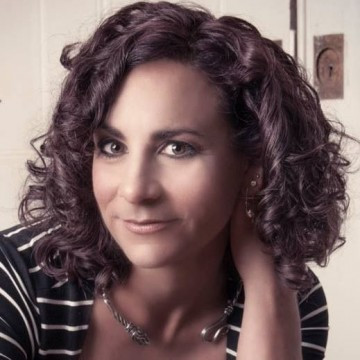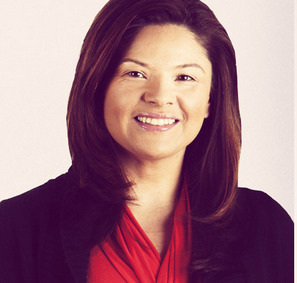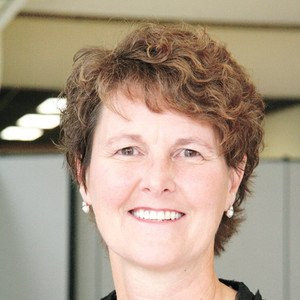It’s All About Education: Inequities in the College Admissions Process
Wednesday, February 04, 2015
Although there are numerous people wondering whether the high cost of a college education is a worthwhile investment these days, many still believe that a college degree is a necessary step along the path to success. From 1980 to 2012, the percentage of 18 – 24 year olds enrolled in college increased from 26% to 41%. In fact, applying to college has become so competitive that high school seniors often apply to anywhere from six to thirty different schools. The National Association for College Admission Counseling (NACAC) reports that, in 2011, 29% of surveyed students applied to nine or more colleges. With an average college application fee of $41 (and with at least 35 schools charging $75 or more), simply applying to college can be a costly endeavor. These fees alone can dissuade low-income students from applying to the wide range of colleges to which their wealthier peers may apply.
At the top colleges, applications are rising at astronomical rates. Princeton University received just under 27,000 applications for the Class of 2019, the second-largest amount in its history. Dartmouth, the University of Pennsylvania, and other high-ranking schools have all seen similar jumps; New York University had the largest applicant pool it has seen in 15 years. As gaining admittance to a selective college has become more competitive, more students are applying early, hoping to secure their spots by December. Today, 460 colleges offer an early admission option, up from about 100 twenty years ago. And, as Bloomberg reported, the early application process seems to benefit wealthier students. Families who cannot afford to pay full tuition generally wait for the regular admission round so that they can compare financial aid offers. Meanwhile, schools like Northwestern and Duke University have already filled about half of their available seats in the early admission round. Acceptance rates for early rounds may be up to twice as high as in the regular rounds; college advisors are aware of this, and many counsel students to take advantage of these early programs.
But which students are most likely to have dedicated college counselors? Those whose families can afford to hire them, or those who who attend independent college preparatory high schools. In a typical public high school, most college counselors are spread too thin to allow them to provide in-depth advising for each individual student; instead, they may tend to spend their time advising those whom they deem most likely to go to college. As David Hawkins, Director of Public Policy and Research at NACAC explains in Education Week, “There is certainly a case to be made that with tight budgets, we have to do what we can, and making sure that students who achieved academically are not left behind constitutes a first point of triage—a fair argument.” According to a 2014 report, a college counselor in a typical public high school has a median caseload of 299 students; the median caseload for a college counselor in an independent school is almost one-third that number, at 106 students. At very large public high schools (those with 2,000+ students), counselors have a median caseload of 450 students. Given these statistics, is it any wonder that there is a higher college acceptance and attendance rate at independent schools? The college application process is complex; most students and their families can benefit from knowledgeable guidance and assistance as they navigate the process, regardless of their economic background. This guidance becomes even more critical if the student is the first in his or her family to apply for college.
GET THE LATEST BREAKING NEWS HERE -- SIGN UP FOR GOLOCAL FREE DAILY EBLASTSome states have programs aimed at helping to correct this imbalance. In Rhode Island, the College Crusade was founded in 1989 to help reduce high school dropout rates and increase educational success for students from the most economically disadvantaged families. Students enrolled in the program attend college much more frequently than those in the state’s urban school districts. Unfortunately, as a nonprofit program, the College Crusade is only able to serve approximately 3,900 students per year; according to KidsCountRI, in 2013 there were 44,923 children in the state living below the poverty line. In Maryland, there is a proposal to expand an existing college advisory program aimed at low-income students. The program, called Achieving Collegiate Excellence & Success, places full-time academic coaches at area high schools to assist students with navigating the college application process, filling out forms, exam-prep courses and summer transition programs. Unfortunately, even with the planned expansion,only the highest performing 10% of all eligible students would be able to receive counseling services. Critics argue that this approach will deny support to those students who need it most. Critics argue that this approach will deny support to those students who need it most.
We know that there is an achievement gap between students from low socioeconomic backgrounds and their more affluent peers, and that this gap begins at birth. We also know that, until we dedicate financial resources to early childhood education, we are not likely to shrink that achievement gap. In the meantime, we should also designate education dollars for academic counselors in our high schools, to provide individualized attention and guidance for those students who need it most. Those counselors should begin working with the students at the beginning of 9th grade, so that they can help them set goals and create a plan of action for the next four years and beyond. Perhaps if every one of our students felt valued and empowered to pursue their dreams and had the resources available to them to make those dreams a reality, they would be more likely to accomplish their goals in life. And if we believe that a college education is the key to a secure future, then we should commit ourselves to helping every student get into college.
Lauri Lee is an independent consultant with over twenty years of experience in both public and private education, with learners from infants through adults. With experience in teaching, marketing, communications, social media, development, admissions, and technology, she is able to synthesize many of the issues facing our educational system today. She lives in Providence, RI with her family, a big dog, and a small cat. She blogs at www.AllAboutEducation.net and you can follow her on Twitter at @fridovichlee.
Related Slideshow: RI Experts on the Biggest Issues Facing Public Education
On Friday November 22, the Hassenfeld Institute for Public Leadership at Bryant University, the Latino Policy Institute of Roger Williams University, the Rhode Island Association of School Committees, the Providence Student Union, and RI-CAN: Rhode Island Campaign for Achievement Now will host Rhode Island leaders in the public and nonprofit sectors for a symposium on "the civil rights issue of the 21st century, adequacy and equity and the State of Education in Rhode Island."
Weighing in on the the "three biggest factors" facing education in the state today are symposium participatnts Gary Sasse, Founding Director of the Hassenfeld Institute for Leadership; Christine Lopes Metcalfe, Executive Director of RI-CAN; Anna Cano-Morales, Chairwoman of the Board of Trustees, Central Falls Public Schools and Director, Latino Policy Institute at Roger Williams University; Tim Duffy, Executive Director, RI Association of School Committees; and Deborah Cylke, Superintendent of Pawtucket Public Schools.
Related Articles
- It’s All About Education: Chronic Absenteeism’s Effect on Learning
- It’s All About Education: Is it Time for a Slow Education Movement?
- It’s All About Education: Student Engagement Leads to Success
- It’s All About Education: Making the Dream a Reality
- It’s All About Education: Playing in the Woods Can Help Kids Reach Their Full Potential
- It’s All About Education: The Connection Between Housing and Achievement
- It’s All About Education: It’s About Time
- It’s All About Education: Pediatricians’ Group Finally Jumps on Early Literacy Bandwagon
- It’s All About Education: Could Text Messaging Make Us Better Parents?
- It’s All About Education: Can Recess Help Children Be More Successful?
- It’s All About Education: Do You Trust Your Child’s Teacher?
- It’s All About Education: What if College Isn’t Necessary
- It’s All About Education: Why Common Core Won’t Help Our Children
- It’s All About Education: Some of Education’s Best Ideas from 2014
- It’s All About Education: Social Promotion is Not the Problem
- It’s All About Education: Schools that Harness the Power of Nature
- It’s All About Education: Free College Tuition - Why Just Community College?
- It’s All About Education: The Rise in Kindergarten Readiness Testing
- It’s All About Education: The High Cost of Higher Education
- It’s All About Education: Will Charter Schools Fix Our Public School System?
- It’s All About Education: What is an “Excellent” Teacher, Anyway?
- It’s All About Education: Can Universal Preschool Close the Achievement Gap?
- It’s All About Education: How Can We Ensure that Kids Have Great Teachers?
- It’s All About Education: A Recipe for Disaster - Common Core Standards for Kindergarten








